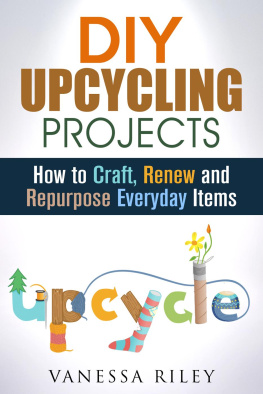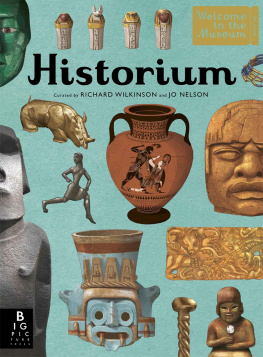

For Mark

Copyright 2020 by AMY AZZARITO.
All rights reserved. No part of this book may be reproduced in any form without written permission from the publisher.
LIBRARY OF CONGRESS CATALOGING-IN-PUBLICATION DATA:
Names: Azzarito, Amy, author.
Title: The elements of a home : curious histories behind everyday
household objects, from pillows to forks / Amy Azzarito.
Description: San Francisco, CA : Chronicle Books LLC, [2020] | Includes bibliographical references.
Identifiers: LCCN 2019010793 | ISBN 9781452178721 (hardcover : alk. paper); ISBN 9781452179025 (epub, mobi)
Subjects: LCSH: House furnishings--History. | Interior decoration--History. |
Home--History. | Curiosities and wonders.
Classification: LCC TX315 .A99 2020 | DDC 645--dc23 LC record available at https://lccn.loc.gov/2019010793
Design by RACHEL HARRELL.
Artwork by ALICE PATTULLO.
Chronicle Books LLC
680 Second Street
San Francisco, CA 94107
www.chroniclebooks.com

Contents

WELCOME HOME

Ive a great respect for things! says Madame Merle in Henry Jamess The Portrait of a Lady,... ones house, ones furniture, ones garments, the books one reads, the company one keepsthese things are all expressive. This is a book about things. The things that fill our homes say a great deal about who we are, as well as what we are and whom we value. Our favorite pieces are imbued with stories: the rocker purchased to soothe a now-grown child, the pewter platter inherited from a favorite grandmother, the sofa purchased for a first apartment.
Every domestic objectthe desk Im writing at, the chair Im sitting on, the lamp that lights the roomnot only has a personal history but also a secret history with roots in the past. Take chairs, for example. Sometimes we can identify the designer and provenance of a particular version, as with the Chiavari or Tolix. Sometimes we know about when a certain variety of chair first appearedfor example, the Windsor or rocking chairbut cant pinpoint an exact date or designer. Still, theres no way to know when the very first chair was built. And for many of these quotidian items, like the desk or the plate, it can be nearly impossible (and often, frankly, uninteresting) to trace their exact moment of creation. In The Elements of a Home, I looked for the highlights in objects lives as they evolved to become the things that are familiar to us today.
Most household objects began their lives to fill a need: something to lie on, sit on, cook in, drink from, chase away the dark. That doesnt mean they were always plain; human beings seem to be drawn to beauty. Once the basic needs of food and shelter were taken care of, people had time to indulge the impulse to decorate their living spaces. Utility became luxury. A crystal goblet becomes valuable as a measure of the time and cost that went into making it. A plain piece of carpet can take the chill off the stone wall of a castle, but a vibrant tapestry says the owner has money to spare.
Until the eighteenth century and the advent of the Industrial Revolution, the decorative arts as we think of them nowobjects created to make life aesthetically pleasing as well as to be usefulwere almost exclusively the purview of the aristocracy and the wealthy, no matter where you lived. Its worth remembering that the colorful pillows, comfortable mattresses, flatware, and upholstered chairs found in even the most basic of modern homes were once only accessible to societys upper echelons.
Perhaps, like me, you find yourself feeling grateful for our ancestors who suffered with stone or wooden headrests, stiff-backed chairs, and long, cold, dark days and nights before feather-stuffed pillows, upholstered couches, and candles found their way into everyday life. Its important to remember that objects we take for granted, like napkins, glassware, and clocks, were once as unimaginable as a handheld computer was to our grandparents.
Our temperature-controlled homes filled with comfortable furniture and lights that flick on and off at our command are luxurious beyond the wildest dreams of the kings and queens of yesteryear. To trace the histories of many of the things we take for granted (and some we dont), we will often follow in their footsteps. And dont be surprised if, again and again, the French pop up in these pages, as Edmund White writes in The Flneur: The French invented the idea of luxe and have always been willing to pay for it... But we will also travel to China, Japan, and Egypt to see what we find there.
So come with me on a journey through history, and discover the complex, colorful, and often surprising story of the domestic objects with which we furnish our homes. Its my hope that you close this book with a new appreciation for the quotidian items that occupy your domestic sphere. Or at least have a few new anecdotes for your next dinner party.

Bathtub
If your idea of heaven is a long soak in a hot tub redolent of flowers, youd feel right at home in the Royal Palace of Mari in Mesopotamia, modern-day Syria. Built more than three thousand years ago, the palace contained the earliest known private bathing room. The multiroom suite featured a shower and two sunken tubs. The queen washed herself in one bathtub, then settled into the other to soak in water scented by perfumed oils.
Skipping forward a millennium or so, the bathhouses of Rome took the luxury of Mesopotamia to the nth degree. The Romans were head over heels in love with bathing, which was a public activity for both rich and poor. Of all the things they builtcoliseums, basilicas, bridgestheir public baths, marvels of technology and design, were arguably their greatest achievement. Utilizing sophisticated plumbing and heating techniques (including heated floors), these elaborate complexes were imposing structures featuring hot baths, tepid baths, cold baths, and open-air swimming pools. Water poured from silver taps, walls were clad in marble, and mosaics were everywhereeven on the ceilings and the bottom of the bathing pools.
After the fall of the Roman Empire, Europeans continued to enjoy a communal bath. But instead of mosaic-lined pools and marble arches, they bathed in wooden tubs similar to large barrels. Unfortunately for public health and personal hygiene, the arrival of the plague in the fourteenth century put an end to the bathtub for the next four hundred years. Bathing was believed to dilate the pores and allow harmful substances to enter the body. It wasnt until Enlightenment thinking brought about a renewed understanding of the importance of cleanliness that Europeans gradually (read: modestly) began to dip a toe back into the water. And so began the private bath.
Next page











 Contents
Contents 

